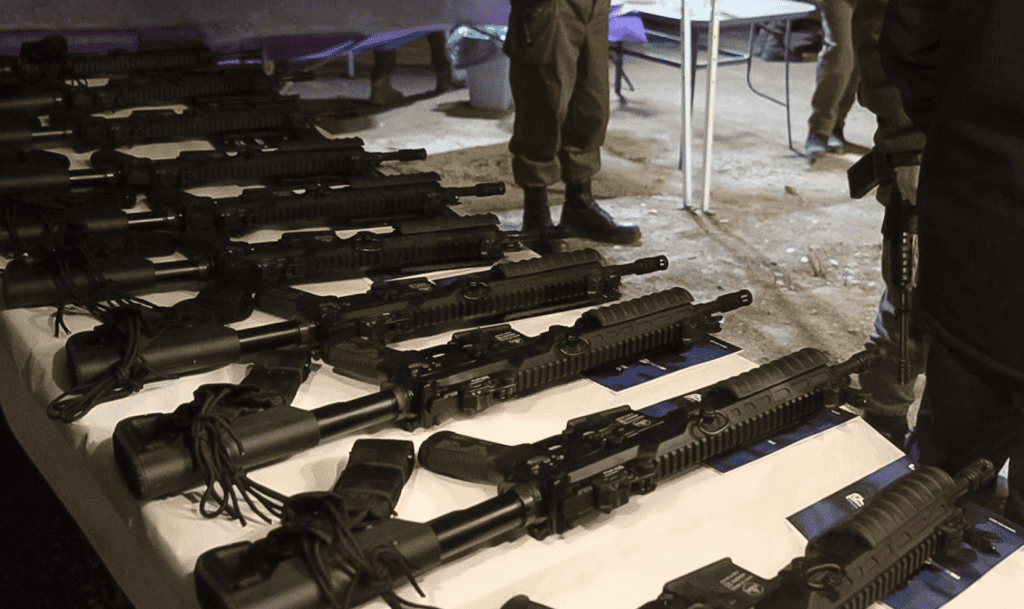
More than three months after Hamas attacked Israel, most residents of border communities affected by the attack still have yet to return. This is a domestic challenge for Israel, including the Ministry of Defense, in terms of investing in security for the border communities and figuring out a plan to get civilians back home. In addition to the communities affected near the Gaza border, there are also 80,000 people who were evacuated in October from communities along the northern border due to Hezbollah attacks. Hezbollah has escalated attacks in the last week, targeting IDF Northern Command in Safed and an important base on Mount Meron. The deeper strikes by Hezbollah illustrate a growing threat — rather than a reduced threat — in northern Israel.
According to a joint statement by the Israel Ministry of Defense and the Israel Defense Forces on January 9, the IDF and the Ministry have begun distributing more firearms and equipment to security teams in local communities. These teams are made up of local residents who often serve in the IDF reserves or have combat experience. In one form or another, they have been a key method of defending Israeli border communities go as far back as the 1950s. However, these squads of volunteers do not always have access to rifles — or enough rifles — depending on their distance from the border and the local security situation. Prior to October 7, the security situation on the border was assessed to be one where a status quo of relative quiet would continue. In the wake of the attack, there has been a large increase in Israelis applying for gun licenses as well as either joining existing or organizing new local community security teams.
The statement from the Ministry and IDF showed rifles and equipment being provided to residents of northern communities: “During the coming weeks, the placing of containers in the Northern Command and the distribution of the equipment to the standby classes in other localities will be completed,” the statement said. This means providing communities with storage facilities where the security volunteers can access and distribute rifles in a time of emergency. The IDF and Ministry said they are also conducting a similar distribution of firearms and necessary equipment to local units in communities near Gaza. In many cases in communities impacted on October 7, select residents who were members of local security teams remained in their communities while the rest of the residents went to stay in hotels. Those who remained perform guard duties, monitoring the abandoned communities and coordinating with the IDF and other security forces.
“Each settlement will receive weapons, ceramic vests and helmets purchased and tested to the highest standards,” the IDF said on January 9. “In addition, further medical and logistical equipment will also be distributed.” In addition training is being provided.
“As part of the ongoing effort to strengthen the defense line in the north, we have begun to carry out a significant part of the process of equipping the standby [units] in the sector. The members of the standby units demonstrate great steadfastness and resilience, and we are proud to stand together with them in the defense of the northern border of the State of Israel,” said Brigadier General (Res.) Alon Friedman.
In general, Israel’s borders were relatively quiet on the morning of January 10, with no sirens in the north or south. If this situation continues, residents might be willing to consider a return to border communities. However, the presence of Hezbollah at the northern border has been a constant concern, and Israel’s leaders have demanded that Hezbollah retreat from the border fence and end its threats. The IDF has said it will continue to act accordingly against to address this threat in the north: “An IDF fighter jet struck terrorist infrastructure and a military compound in the area of Labbouneh in southern Lebanon. In addition, an IDF fighter jet struck a military command center in the area of Kfarchouba overnight,” the IDF said on January 10. In Gaza. The IDF continued to operate in the central Gaza strip and Khan Younis to uncover weapons and dismantle terrorist infrastructure.







